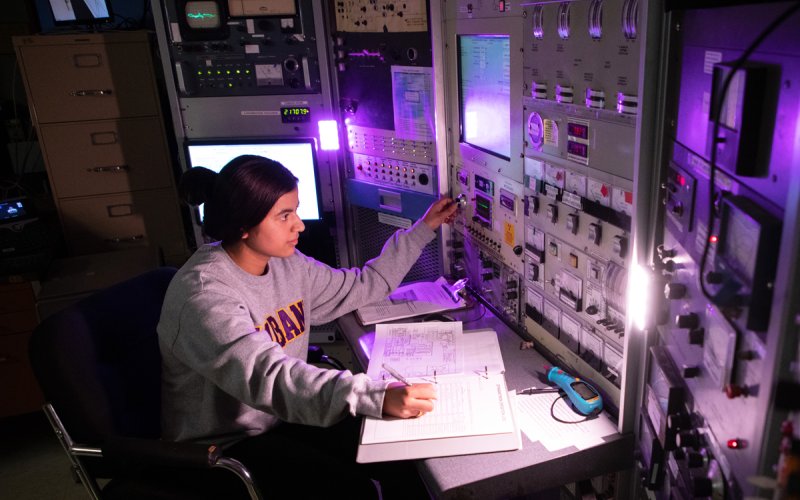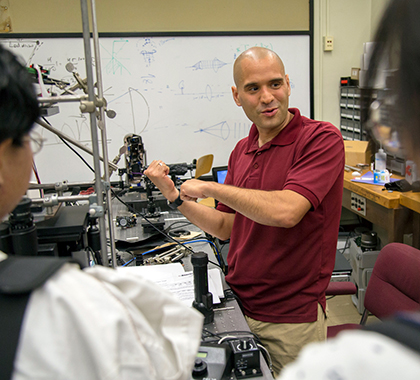UAlbany Launches Master’s Program in Computational Physics

ALBANY, N.Y. (April 13, 2023) — From the development of autonomous robotics for exploring space to the development of tools to study neurological function, computational physics has long played a role in advancing new technologies and human understanding. Now, the University at Albany is launching a master’s degree in computational physics to train future physicists, engineers and computer hardware and software designers to harness the power of numerical solutions of complex physical problems.
“In general, real-world physics problems are very difficult to solve exactly, which means that approximate solutions must be found,” said Associate Professor and Chair of Physics Keith Earle. “Computational physicists develop computational models of practical problems. This new master’s degree program will help students develop a solid knowledge of the mathematical and physical models employed as well as the computational methods that enable computers to reach precise and accurate solutions in reasonable periods of time.”

The master of science (MS) degree in computational physics opens a variety of career opportunities for students. In both the public and private sectors, MS students in computational physics are often employed not only as physicists, but as engineers, data scientists, computer hardware and software designers, as well as in a range of other STEM (science, technology, engineering, mathematics) positions. A degree in computational physics can also prepare a student as a physics teacher, or for a PhD program in physics.
Computational physics research includes quantum computation and discovering new ways of extracting useful information from noisy or complex data. Applications vary widely, including the development of new understanding of the structure of quantum mechanics, models of the neurological function of the brain, self-guided robots for dangerous environments, techniques to identify signs of cancer in medical imaging, and computational methods to analyze early signs of drug-induced damage to brain cells.
This area is also closely tied to particle physics, where projects range from experimental work on the Deep Underground Neutrino Experiment (DUNE) at Fermilab, to machine learning for high energy physics experiments as well as the LUX/LZ Dark Matter searches. DUNE and LUX/LZ are among the world's most high-profile scientific experiments and each of these projects involve faculty from the University at Albany.
The new computational physics program at UAlbany also draws from physics, math and computer science and engineering curricula to prepare students for careers at the intersection of these fields.
“Students will develop pragmatic skills in this program applicable to high demand careers in data science,” said Earle. “This program is unique in that the department has specific strengths in quantum information, information physics, particle and astroparticle physics, and computational imaging.”
The MS in Computational Physics is a 2-year program which assumes some prior undergraduate experience in mathematics and physics or familiarity with a modern computer programming language but is adaptable for students who need some introductory courses.




